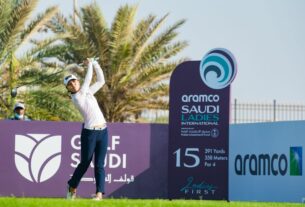By Herschel Caldwell
Asian women to watch in 2019. The expectations are high, and they and many others are poised to continue domination of the Asian and LPGA Tours.
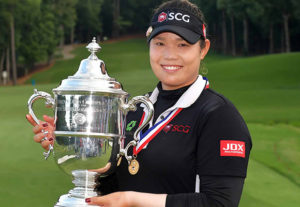
The Jutanugarn sisters: Thailand
Inbee Park, Korea
Michelle Wie, USA
Saranporn Langkulgasettrin, Thailand
Pannarat Thanapolboonyaras, Thailand
The revolving door at the top of the World’s Golf Rankings for women have a distinct Pacific Rim flavor. It’s refreshing and reflective of a trend toward golfing excellence that began nearly forty years ago.
Changing social and economic norms.
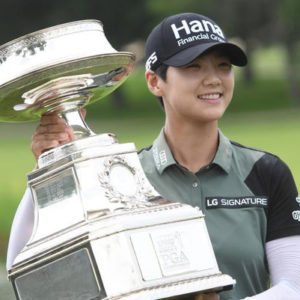
This was a period when the countries of the Far East were enjoying a relative period of peace from military conflict and threats. The conflicts in the Viet Nam region and stable peace in Korea along with booming economies throughout the Far East became a catalyst for recreational development. Olympic competition, tennis, basketball, baseball and yes golf became central to a developing youth movement.
But why golf? As women’s golf increased in popularity in the Western world with increased exposure to television and commercial markets, parents began to steer their young women toward this advancing sport. As the Far East is a largely patriarchal society, few opportunities were available to women and golf offered an acceptable alternative.
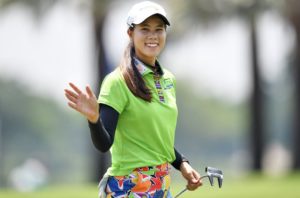 The shortage of public golf courses through the Far East proved to be a halting challenge to men and women seeking a career in professional golf. As late as twenty years ago public golf facilities were practically non-existent in many countries of the region. A typical private club membership could easily cost upwards of $2 million per year were the cheapest green fee on one of the few public courses was typically close to $300.00.
The shortage of public golf courses through the Far East proved to be a halting challenge to men and women seeking a career in professional golf. As late as twenty years ago public golf facilities were practically non-existent in many countries of the region. A typical private club membership could easily cost upwards of $2 million per year were the cheapest green fee on one of the few public courses was typically close to $300.00.
One of the early pioneers in Asian golf development was Kenji Nakajima, president & CEO of NKS America, Inc., A commercial real estate development company. He founded the ASMEDIA San Geronimo Golf School, which began in July of 1994. The $55,000 tuition per student was not out of reach for the well-to-do-parent who sought an alternative career for their young men and particularly young women. This trend was also evident in the career preparation of Michelle Wie, the daughter of a wealthy medical practitioner who thought little of the expense of travel, instruction, and top of the line course access for his very talented daughter.
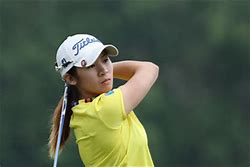 Dedication to achieving.
Dedication to achieving.
Australian golfer and LPGA winner, Jan Stephenson once complained that the “Asian women are killing our tour. “ Her complaint to then Tour Commissioner Ty Votaw prompted a meeting with the Asian players to become more public assessable, less reserved and learn and speak English more quickly. But as Seri Pak and others demonstrated, the winning and dominance continued, and it soon became obvious that the single most factor to winning was a dedication to the sport. Discounting distance for accuracy and practice without the distraction of TV commercials, bathing suit ads, and talk show appearances and yes marriage and kids.
The 1998 U.S. Women’s Open at Blackwolf Run looms larger with each passing year. Twenty years on, the 20-hole playoff won by Pak, a 20-year-old pro from Korea, over Jenny Chuasiriporn, also 20 and an American-born amateur from Duke University whose parents were from Thailand, comes into focus now as the beginning of both the global explosion of golf and the youth wave that has swept over the game.
Pak, who had won a dozen times on the Korea LPGA by 1998, burst into prominence seven weeks before the U. S. Open when she won what is now the KPMG Women’s PGA Championship wire-to-wire. It was the first of her five career major championships and the first of her 25 LPGA wins. But the Open was different in that it was televised back to Korea.
“In Korea, it’s quite expensive to play and a lot, of course, don’t even have driving ranges,” said Inbee Park. “So we have to go to actual driving ranges just to practice and don’t get an opportunity actually to play the golf courses that much.
“Most often times, we hit on the practice ranges, just striking the ball. Not much of a putting green or short game.”
Most often times young players practice their swings in front of a mirror for hours, weeks and years, before stepping foot on a legitimate course. They hone their skills without hitting a ball.
“Everything in Korea is expensive to practice golf,” said Korea’s So Yeon Ryu,. “But they do have a great national team program. I spent four or five years with the team. It’s a great program. The players would have access to all the golf courses around the country and their practice facilities.
The courses, the national golf programs, and the government work in tandem to churn out dozens of LPGA Tour candidates each year.
This dominance will continue to grow, and minoritygolfmag.com will continue to write about this ever-growing segment of professional golf.


